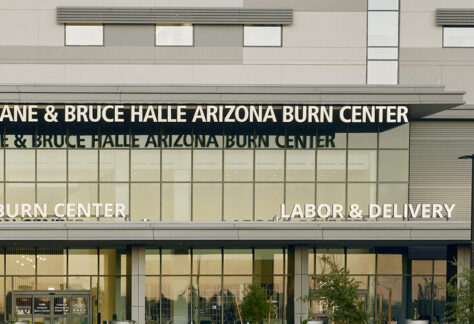In This Article:
- Common symptoms of food poisoning include upset stomach, cramps, nausea, vomiting, diarrhea and fever.
- More severe food poisoning symptoms include blood in stool, diarrhea, severe dehydration, blurred vision, dizziness, persistent fever and vomiting.
- Symptoms can worsen and change over time, taking anywhere between 30 minutes to 36+ hours after eating. If your symptoms are serious and/or persist for more than 3 days, seek treatment immediately.
No matter how many times it has happened to you, there’s nothing to make the experience less uncomfortable when it does occur. Food poisoning is an illness caused by eating food contaminated by organisms such as bacteria, viruses and parasites. Usually, food poisoning is mild enough to resolve itself without treatment. But in some instances, people need to go to the hospital.
If you’re experiencing food poisoning and are worried about the severity, call your local urgent care provider. Unless you’re facing life-threatening danger, talk with urgent care providers on the phone and they may be able to give advice on medical treatment. The normal symptoms of food poisoning, according to the National Institute of Health, are:
- Upset stomach
- Cramps
- Nausea
- Vomiting
- Diarrhea
- Fever
If your symptoms seem worse, a trip to the ER may be in order. So, how do you know if food poisoning is bad enough to warrant a visit to the hospital? If you’re experiencing one of the symptoms below, seek medical emergency attention immediately:
- Blood in stool or vomit
- Green or yellow colored vomit
- Severe dehydration symptoms such as dry mouth, extreme thirst, headache, clamminess, dizziness, and dry skin
- Fever above 101°F (38.3ºC)
- Severe pain in the abdomen
- Diarrhea that continues more than 3 days
- Frequent vomiting that prevents keeping liquids down
If several of the above symptoms occur, get in contact with emergency services immediately.
If you have experienced prolonged symptoms of food poisoning, you may be suffering from one of the following foodborne germs, according to the CDC.
30 Minutes to 6 Hours
Symptoms include nausea, vomiting, stomach cramps and diarrhea. The most common type of food poisoning is Staphylococcus aureus (Staph). This bacteria typically infects through foods that are handled improperly by someone carrying stuff, typically from physical contact.
6 to 24 Hours
Symptoms include diarrhea, stomach cramps. Vomiting and fever are uncommon. Usually begins suddenly and lasts for less than 24 hours. This common food poisoning is Clostridium perfringens, which is typically found in raw beef or poultry, especially large roasts; gravies; dried or precooked foods.
12 to 48 Hours
Symptoms include diarrhea, nausea/stomach pain, and vomiting. When symptoms last this long, it’s possible you may have Norovirus. This virus typically infects through Contaminated food like leafy greens, fresh fruits, and shellfish (such as oysters), or water. Most people with norovirus illness get better within 1 to 3 days.
12 to 72 Hours
Symptoms include diarrhea, fever, stomach cramping and vomiting that lasts up to 3 days. In this instance, the culprit could be salmonella, a common bacteria strain that infects raw or undercooked chicken, turkey, meat, eggs, raw milk, juice, raw fruit and vegetables. While not usually life threatening, it’s important to remain hydrated during a bout of Salmonella food poisoning.
18 to 36 Hours
Doubled and blurred vision, drooping eyelids and slurred speech. In some instances this poisoning can make swallowing and breathing difficult. When accompanied by muscle paralysis and weakness, these symptoms can indicate the presence of Clostridium botulinum (or Botulism). This type of poisoning occurs from improperly canned or fermented foods.
For more information about food poisoning symptoms and possible treatment, contact Valleywise Health professionals. For serious symptoms or symptoms that last longer than three days, contact an emergency room near you and seek treatment as soon as possible.
Sources:
1. https://www.niddk.nih.gov/health-information/digestive-diseases/food-poisoning/treatment
2. https://www.cdc.gov/foodsafety/symptoms.html







